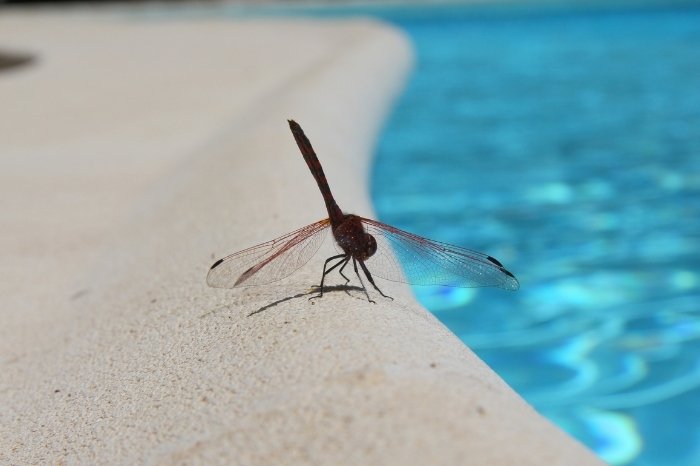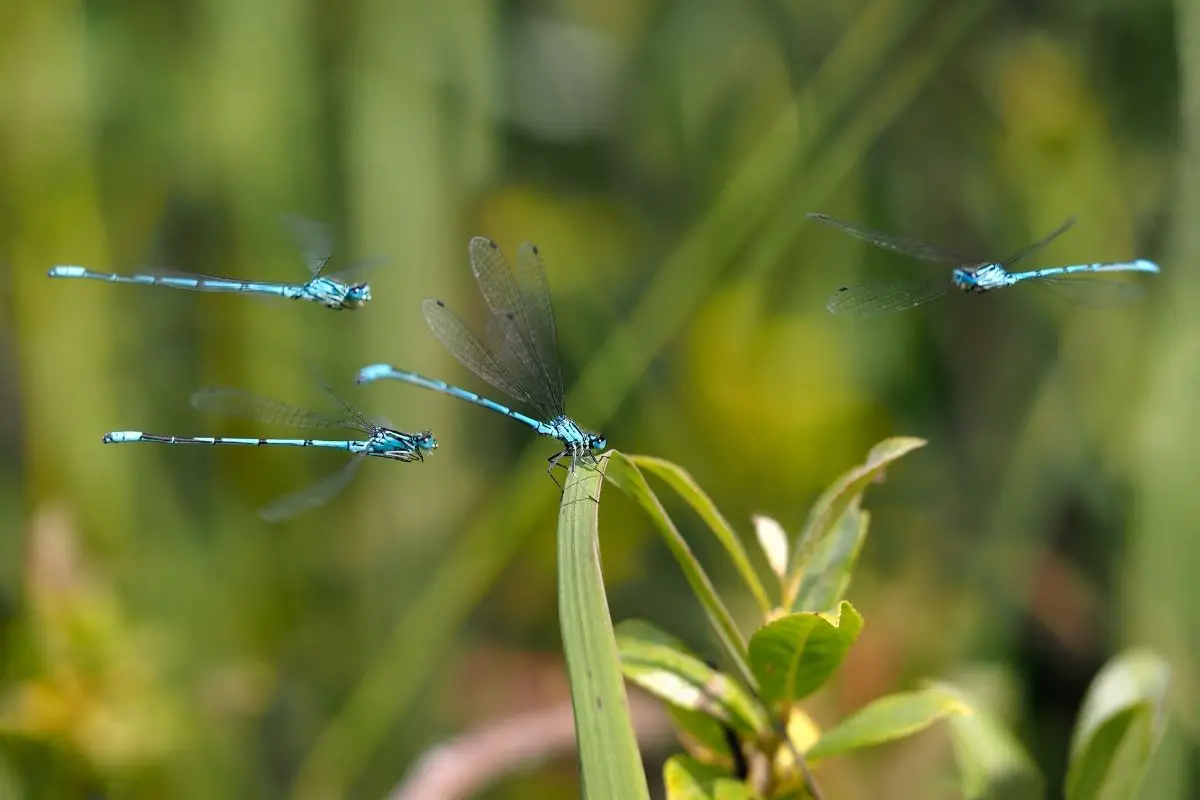Last Updated on January 11, 2022 by Cristina
Ever seen a swarm of dragonflies flying past you and wondered what does it mean when there are lots of dragonflies in your area?
Many dragonflies seen in one area have always been the subject of myths and legends, and a huge part of human stories are told from one generation to another. These brightly colored insects are known for their vibrant colors and flying abilities.
Even though they are just insects, they are somehow revered in some communities and feared in others. Let’s get to learn what it means when there are lots of dragonflies in your yard.
What Does It Mean When There Are Lots Of Dragonflies In Your Area
The one primary reason why you have an abnormal swarm of dragonflies in your yard is primarily because of water proximity. If you have a pool or standing water from recent rainfall, dragonflies will visit your yard because they are attracted to the water.
Dragonflies flock water sources -rivers, streams, and lakes where they develop as nymphs. They take at least one year to develop from egg to adult stage, some taking at least 2 or 3 years.
The large swarms of dragonflies you see are at least 1 year old or probably 2. Today’s abundance of these insects is related to what happened 1 to 3 years ago. They are pretty common and in high numbers when healthy water ecosystems are abundant, which is a good thing. These insects travel long distances to congregate in areas with plenty of food, such as mosquitoes and ants, etc.
Click here to Learn About:
So What Attracts Them To Your Yard?
Water is the number one cause of an influx of dragonflies. However, there are other reasons that may attract these insects to your yard. They include
Stagnant Water
As we have mentioned above dragonflies, love water. They are attracted by streams, ponds, or any mushy type of landscape. These insects are drawn to areas where there is stagnant water, such as wetlands, ponds, or streams. If your yard has stagnant water, it attracts an abnormal number of these insects around your home. Dragonflies still live in the water. They breed in water, and most of their sustenance is found in water bugs. Some people even set a small pond to attract these insects in their homes. They spend up to 2 years forming and growing in the water and only leave for about 4 weeks after adulthood.
Availability Of Other Bugs
Another reason you may have plenty of these invasive insects in your yard could be due to bugs infesting in your yard. Mosquitoes are dragonflies’ favorite snacks and will invade any yard that has a good amount of them. If your yard has a high population of mosquitoes, then it could bring some of these insects along. Just like dragonflies, mosquitoes are drawn to water where they breed and leave. Even a simple water holder like a birdbath could attract both dragonflies and mosquitoes.
GTOCS Bug Zapper, Electronic Insect Killer for Garden Patio
Weather Conditions
Weather is a significant contributor to dragonfly infestation. Rain, snow, and thunderstorms can all leave stagnant water in your yard providing an ideal environment for dragonflies to take over. Dragonflies also have a migration pattern that is based on the seasons. They will go south to find a warmer climate during the winter but do not usually migrate in swarms. The green darner dragonfly my grades together for breeding. If you happen to fall in the migration path, then the infestation becomes heavy due to migration.
Types Of Dragonflies Swarms
Static Swarms
A static swarm is a smaller group of dragonflies flying in a small area. These dragonflies swarm around for feeding purposes. A static swarm contains different varieties of dragonflies, not like the migratory swarm.
Migratory Swarm
A migratory swarm features hundreds of dragonflies flying together. These swarms are similar to butterflies or birds who migrate to warmer weather together when it comes to wintertime.
Eliminating These Insects From Your Yard
These insects are attracted to mosquitoes and stagnant water. The best way to get rid of dragonfly infestation in your yard is to eliminate any stagnant water, which will, in turn, eliminate mosquitoes. If you have a pool or some other form of standing water there are a few ways to decrease the chance of dragonflies in your yard. You can add frogs to your pond to eat up the dragonflies.
If you keep your pond fresh and well-maintained, dragonflies will unlikely want to breed in your pond. This will eliminate any dragonfly infestations in your yard.

If all these methods fail, you can also bring in a trusted professional team to help with pest extermination and treat your yard. Most local companies have a pet and kids-friendly options to eliminate dragonflies from your yard safely.
Conclusion
Next time a fellow gardener asks what does a swarm of dragonflies means you are now in a better position to answer them not with myths but the correct information.
Even though dragonflies can be helpful in eating up the mosquitoes it is crucial not to have a massive infestation in your yard. They can always be too much of a good thing as well. So keep a minimum number of dragonflies if you face a mosquito problem to help you treat it naturally.
Even if you don’t have mosquitoes in your yard but you love the beautiful colors of the dragonfly you can go ahead and allow only a few in your yard just for beauty purposes. Remember to destroy all water sources to keep them from breeding in your compound.
Future infestations begin today because we have learned they take too much time in the water when needing only to live for a short time once they are adults. Therefore, if you let stagnant water continue to lie around your home, eventually, you will have a huge infestation of these insects.
All the best in your fight against these invasive insects. Don’t forget to appreciate them for their support in the ecosystem. And save a few to continue affecting the good things in your gardening journey.
Caroline is a gardener who loves to get down to the nitty–gritty of gardening. She proudly proclaims herself as a ‘dirt worshipper‘ and can often be found deep in the garden, covered in soil and singing to her plants. As a self–proclaimed ‘plant whisperer‘, Caroline believes that plants need love and attention just like any other living thing, and she loves to give them both. When she‘s not tending to her garden, you can often find her researching the latest gardening trends, or teaching others how to make their gardens thrive



